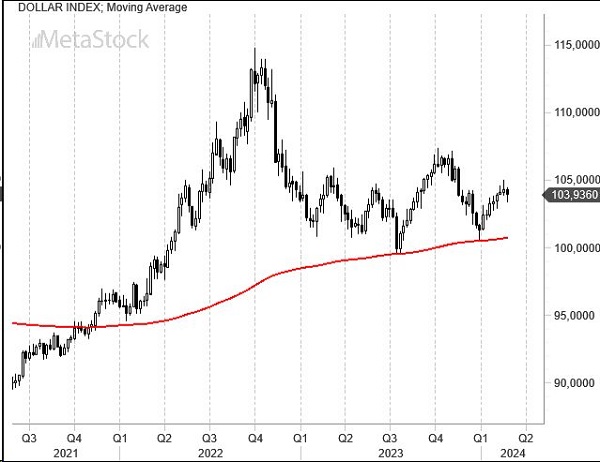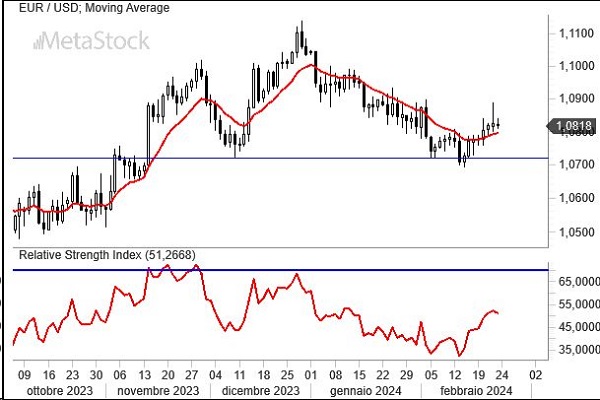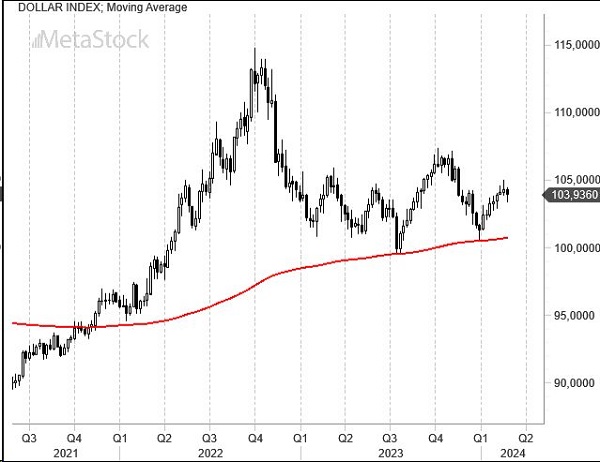- Financial markets catch their breath after historic highs in equities and wait for the Fed to determine when in the summer rates will finally be cut. Not before June, judging by the futures markets.
- Growth estimates for Eurozone countries have been lowered, now looking to the ECB for monetary policy actions that could ease the economic situation. However, there’s a risk of the euro falling, so Lagarde will be very cautious before acting.
- EurUsd once again shows an excellent capacity to react on supports that are recovered at the last minute, boosting the action of the single currency.
Market Dynamics: Equity Highs, Rate Cut Speculations, and Europe’s Growth Dilemma
American markets struggle to catch their breath after reaching recent historic highs in equities, with investors eager to enter and join the rally. Meanwhile, the yields on ten-year Treasuries remain firmly above 4%, confirming the outlook that the Fed might be more open to a rate cut in the summer when inflation is expected to dent the now crucial 3% threshold. Predictions from the end of 2023 of as many as six rate cuts in 2024 have been significantly scaled back.
The focus of the week has been on Europe. Germany has lowered its growth forecast for 2024 to 0.2%. France has cut its estimates to +1%, and the European Commission estimates growth for the entire Eurozone at 0.8%. German IFO index data, both in terms of expectations and current conditions, confirm the stagnation of the economy.
There’s no use beating around the bush. Although lowering rates seems to be the best tool to reignite growth, until inflation falls back towards 2% and the Fed shows a clear willingness to act in a dovish manner, Lagarde will remain on the sidelines. Lowering the cost of money would mean reducing the value of the euro and importing inflation, questioning the excellent work done so far by the ECB.
Technical Analysis: Navigating Seasonal Impacts and Bearish Patterns on the Dollar and Euro
If seasonality were to negatively affect the American dollar as statistics from March to late summer predict, then the bearish head and shoulders pattern the market is drawing on the greenback could become tactically interesting. Currently, there are no indications of this, but it’s clear that if the Dollar Index were to fall towards the 100 zone, that level would become crucial for the technical layout of the following months. Moving averages and the neckline would be the demarcation lines of a new trend that is not yet visible on the horizon, but every trader can start to consider in their currency strategy book.

The battle is ongoing on EurUsd as well, with attempts to definitively break through the 200-day moving average seeming to have been thwarted by the recovery of the single currency, which in one fell swoop labels the movement as a bear trap; at the same time, it reverses the bearish trend that has been accompanying the exchange rate since the beginning of 2024. Oscillators are not much help, being in neutral territory, but it’s worth remembering that the unfavorable seasonality for EurUsd ends at the end of February. From that point forward, the resurgence of the European currency should begin, and so this resurgence of the euro combined with the pattern being drawn by the Dollar Index are clues that could indeed start to become interesting for those looking for a good point to begin covering currency risks on the dollar or setting up a long strategy on the euro with a few months’ time horizon.



Leave a Reply
You must be logged in to post a comment.